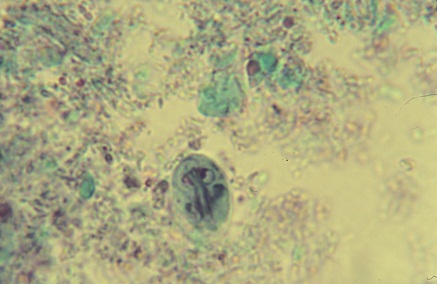Difference between revisions of "Reptiles and Amphibians Q&A 23"
Jump to navigation
Jump to search
| Line 1: | Line 1: | ||
| − | |||
| − | |||
| − | |||
| − | |||
[[File:Rep 23.jpg|centre|500px]] | [[File:Rep 23.jpg|centre|500px]] | ||
| Line 26: | Line 22: | ||
|q4=What advice would you give the owner? | |q4=What advice would you give the owner? | ||
|a4= | |a4= | ||
| − | Because | + | Because Giardia can infect humans, great care must be taken to avoid faecal contamination of foodstuffs, food-preparation areas and utensils, and/or domestic water supplies. |
|l4=Giardiasis | |l4=Giardiasis | ||
</FlashCard> | </FlashCard> | ||
Revision as of 16:26, 28 October 2011
This photomicrograph is of a trichrome-stained organism found in the faeces of an iguana.
| Question | Answer | Article | |
| What is your diagnosis? | Giardia lamblia. Note the twin eye-like anterior nuclei that characterise this organism. |
Link to Article | |
| Is this organism pathogenic? | Yes, particularly in stressed, immunocompromised patients, or in patients with other serious medical conditions. |
Link to Article | |
| If pathogenic, how would you treat this organism? | Treatment consists of metronidazole (125–250mg/kg orally every 48–72 hours for one to two weeks). |
Link to Article | |
| What advice would you give the owner? | Because Giardia can infect humans, great care must be taken to avoid faecal contamination of foodstuffs, food-preparation areas and utensils, and/or domestic water supplies. |
Link to Article | |
